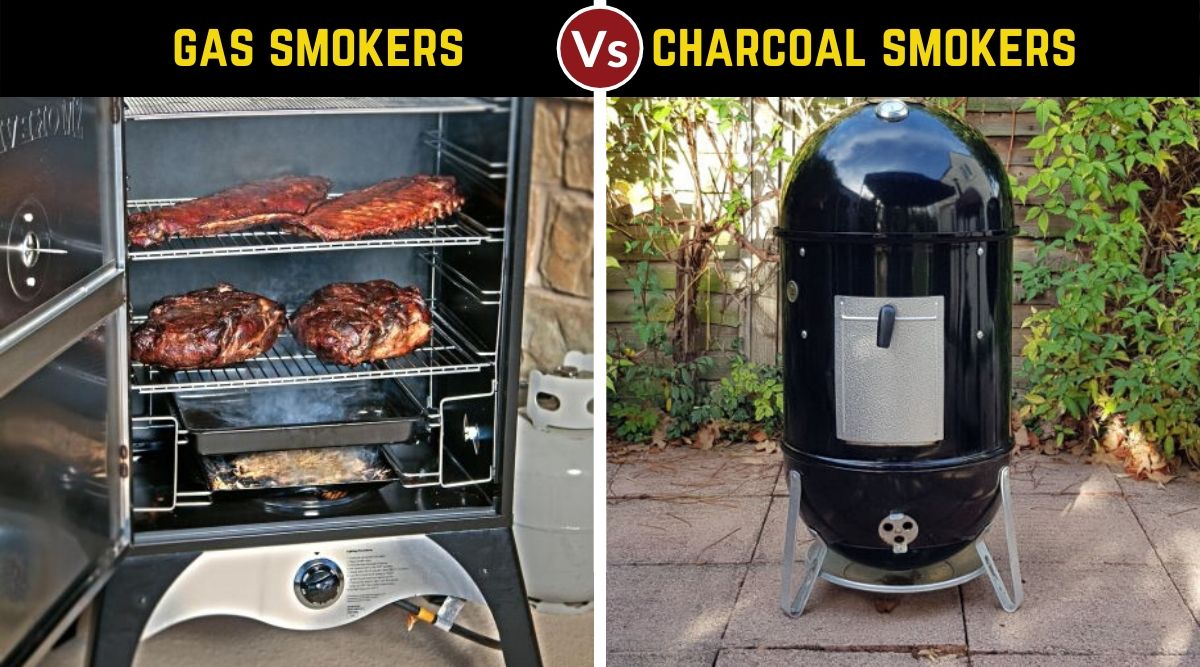
In my mind, the first smoked meat was made accidentally by hanging meat over a fire in a cave and forgetting about it overnight. Mmmm… smoked mammoth brisket!
We’ve come a long way since then, and now we smoke outside our (man)caves with purpose-built smokers.
If you’re joining us today, it’s probably because you’ve decided to embrace your inner troglodyte and are on the hunt for a smoker of your own.
You may already have discovered that there are three basic forms of smoker to choose from, each distinguished by its heat source. (They’re all the same in that they employ smoldering wood chips, chunks, or pellets to create flavoring smoke.) There are electric smokers, gas smokers, and charcoal smokers.
In this article, we’ll compare and contrast gas vs charcoal smokers, to help you decide which is right for you.
After you’re done reading this guide, you will know the relative pros, cons, features, and differences between charcoal and gas smokers, and be able to make an informed decision on which would most closely match your needs and goals.
If by the end you’re still undecided which is best, we invite you to check out our other comparative articles — gas vs. Electric smokers, and electric vs. Charcoal smokers.
Consider this your first step into a whole new era of flavor!
Jump to:
- 1 Gas Smoker General Overview
- 2 Charcoal Smoker General Overview
- 3 Comparison Table
- 4 Gas Smoker Vs. Charcoal Smoker Contrasts and Comparisons
- 4.1 Quality and Consistency of Finished Foods
- 4.2 Ease of Use and Convenience
- 4.3 Versatility
- 4.4 Temperature Range — High Heat and Low Heat
- 4.5 Size, Footprint and Space Required
- 4.6 Cooking Capacity
- 4.7 Reliability
- 4.8 Bad Weather Effects
- 4.9 Maintenance Required
- 4.10 Initial Cost to Buy
- 4.11 Ongoing Cost to Run
- 4.12 Popularity and Community
- 5 Gas Smoker Summary — and Who Should Buy One?
- 6 Charcoal Smoker Summary — and Who Should Buy One?
- 7 Conclusion
Gas Smoker General Overview
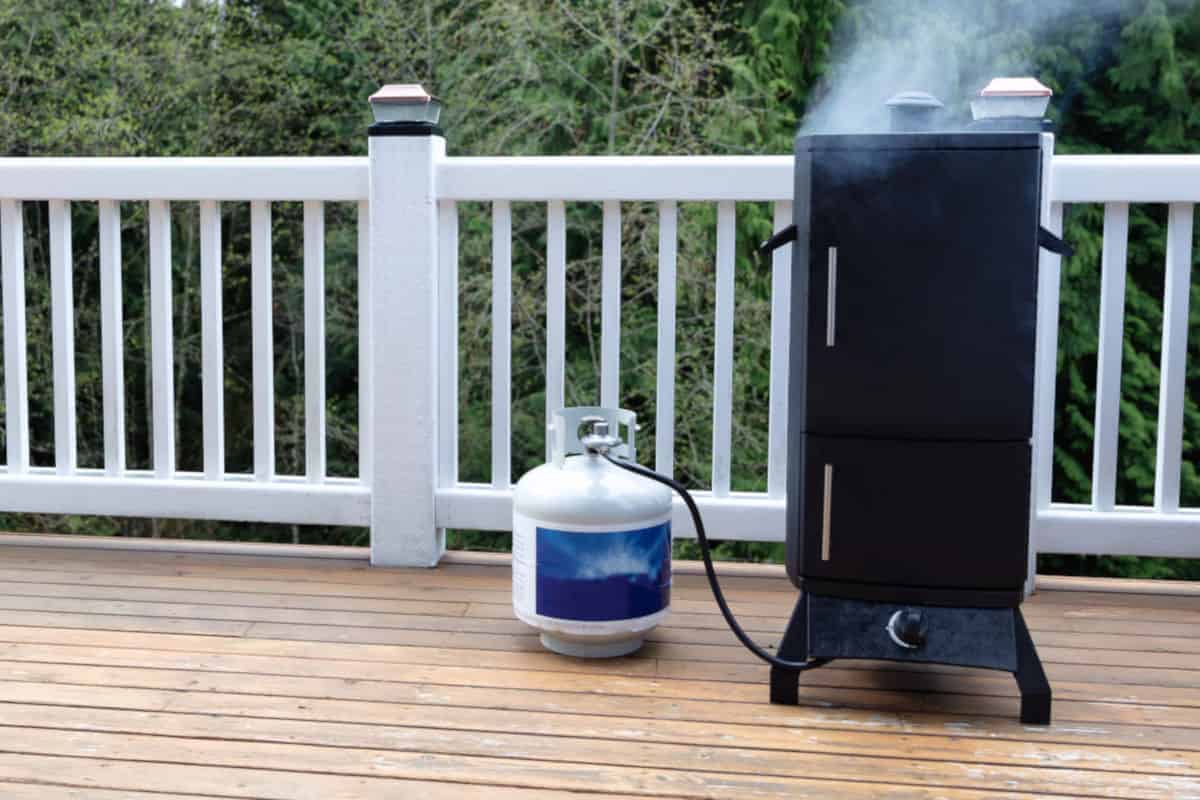
Just like a propane or natural gas grill, a gas smoker uses one of those two fuels (usually LPG) to light and maintain a fire. With a smoker, that fire sets wood chips to smoldering, releasing smoke into the cooking chamber. In combination with the heat of the fire, meat and other foods are slowly cooked and smoked.
The best gas smokers are of the vertical type, meaning the fire is at the bottom of a vertical chamber, and the smoke and heat rise up and around the food before exiting at the top. They are relatively easy-to-use; ignition is instant, and heat comes quickly. Just adjust the flow of gas to bring your temperature up and down.
You’ll need a propane tank, of course — usually a standard 20-pounder. There aren’t a lot of natural gas smokers out there, but if you’ve got the hook-up already, it’s worth considering for convenience’s sake.
Charcoal Smoker General Overview
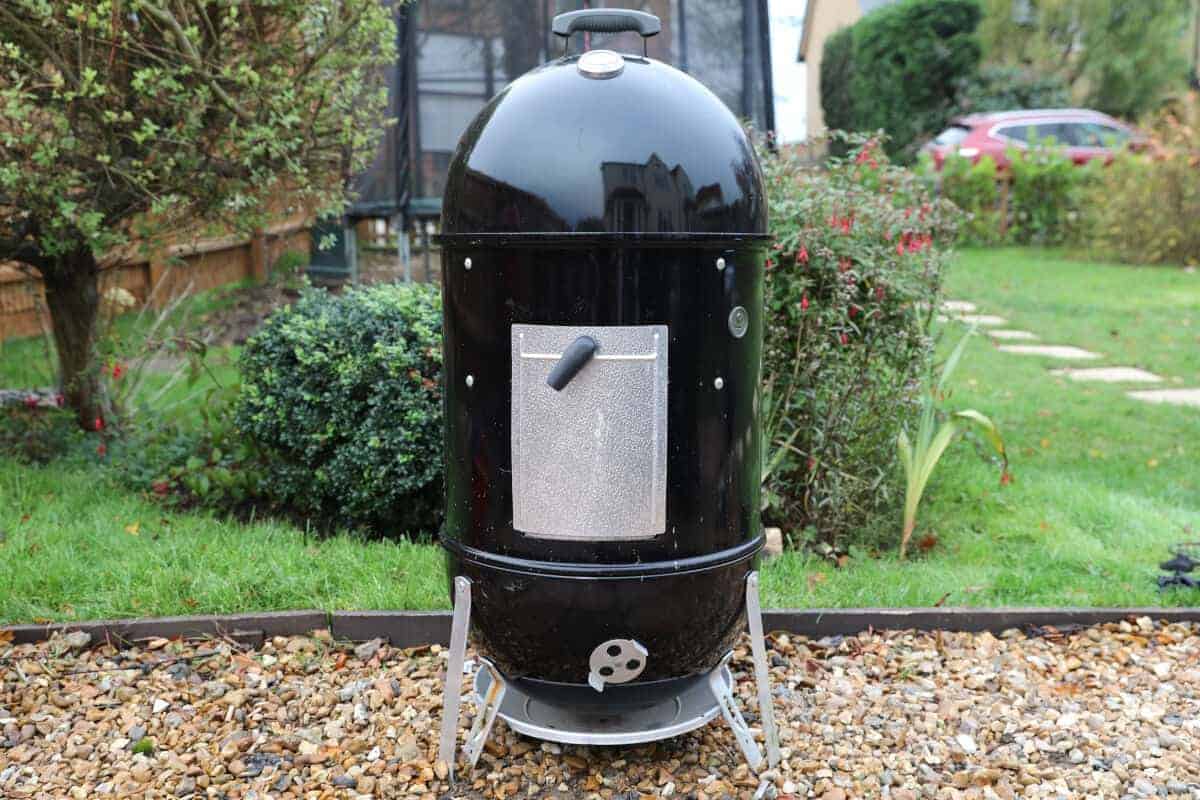
For many, charcoal is the truest expression of all things barbecue. You don’t need any external fuel source; just light your fuel and add chips or pellets.
You’ll get your strongest smoke from charcoal, but it’s also the hardest to master. Controlling the temperature means controlling the oxygen that gets at the fire. To do this, you’ll need to learn the fine art of adjusting dampers, vents, and baffles.
During a long smoke, charcoal may need to be replenished. Overall, it’s more labor-intensive with a steeper learning curve, but the results can be sublime.
Comparison Table
Before we go in-depth, check over this chart for a quick comparison of gas and charcoal smokers.
| Category: | Gas Smoker | Charcoal Smoker |
|---|---|---|
| Quality of finished food | Very good; a lot of smoke can be produced | Excellent; possible to achieve intense smokiness |
| Ease of Use | Simple to light and easier to keep at the right temperature than charcoal | Harder to light and hold a constant temperature; steeper learning curve |
| Versatility | Good for smoking and roasting | Good for smoking and possibly roasting |
| Temp Range | Approximately 150 °F – 400 °F | Approximately 125 °F – 350 °F |
| Size and Space Required | Anywhere from about 2’ × 2’ for verticals to 6’ × 4’ for offsets | Virtually the same |
| Cooking Capacity | Large and small options available; no appreciable difference | Nearly identical options for charcoal as gas |
| Reliability | Reliable but with more parts that could possibly fail including hoses and burners | Very little to go wrong thanks to basic construction |
| Weather Considerations | Works in all weather; fewer issues with wind than charcoal | Good in all weather but needs extra care when the wind blows into the vents |
| Maintenance Needs | General maintenance; cleaning racks, wiping down | More intense cleaning due to susceptibility to creosote build up and blockage |
| Relative Cost to Buy | Similar but with less low-cost/entry-level options | More choice for inexpensive smokers and high-end units |
| Relative Running Costs | Propane costs are somewhat lower – about $0.40/hr. | More expensive, but varying depending on charcoal used – from $0.50/hr. – $1.00+/hr. |
| Popularity | Moderately popular | Most popular smokers |
Gas Smoker Vs. Charcoal Smoker Contrasts and Comparisons
We’ve lined up some key criteria to consider when you’re choosing between the different types of smokers.
Remember, there are rarely absolutes and what’s a problem for one person may be a benefit for another.
Quality and Consistency of Finished Foods
Without meaning to cause a controversy, this one is almost too close to call. Both are capable of delivering good results.
If you’re new to smoking, your first efforts with gas will almost certainly be better than your first with charcoal just because it’s harder to mess up.
Once you get the hang of it, though, charcoal smokers can create killer smoked meat.
As charcoal burns, it generates lots of complex compounds in its smoke. The smoke is barely visible, but it’s there. And this imparts a fantastic, smoky flavor to food, even without the addition of wood chips or chunks. You just do not get this with gas. There’s a reason why they use charcoal at nearly all competitions.
So, while you really can cook great smoked meat in a gas smoker, we’re giving the edge to charcoal for those willing to invest the time to hone their skills.
Note: Check out this guide for reviews of the best charcoal smokers available today.
Ease of Use and Convenience
It’s hard to imagine anything less convenient than smoking with charcoal. Not only do you have to use messy, bulky fuel, you also have to take the time to light it up manually, AND you have to check on it regularly to make sure you’re staying at optimal smoking temperature. (Which is about 225 °F to 250 °F, incidentally.)
Gas, on the other hand, lights up instantly and is easy to control. Yes, it is finite, and you’ll have to swap out your tank eventually. But, a full tank of propane will last much longer than a full bag of charcoal.
Gas for the win in this section.
Versatility
With many gas smokers, it’s possible to raise the temperature high enough to roast meat instead of smoke it low ‘n’ slow. That’s a nice option to have.
You can do the same with charcoal, provided it’s not too cold outside. And where it really gets versatile is with an offset-style smoker or kamado.
The horizontally oriented offset smoker looks more like a traditional gas grill than their vertical cousins. Since the fire is built-in an entirely separate chamber with its own lid, it is possible to build up the heat enough to actually grill a few burgers or steaks if there’s a grate installed.
With a kamado grill and smoker, you can get temperatures all the way up past 700 °F with a full load of charcoal and the top and bottom vents fully wide open. This means you can smoke, roast, bake and sear on the same unit.
So the winner for versatility would be charcoal for us.
Temperature Range — High Heat and Low Heat
Both styles have the potential to reach roasting temperatures of 350 °F – 400 °F (177 °C – 204 °C), though you may find this easier with gas compared to most charcoal smokers. However, as previously discussed, kamado style smokers can go way higher!
Low-end temperatures are comparable; neither one will allow for cold smoking, but that’s not a big deal. Expect a range of about 150 °F – 400 °F (65 °C – 204 °C) for gas and 125 °F – 350 °F (52 °C – 177 °C) for most charcoal smokers.
Size, Footprint and Space Required
Do you have room in your outdoor space for the smoker of your dreams? Make sure you know your parameters before you purchase!
If you’re looking at vertical smokers, there’s really no difference between gas and charcoal. They are both available in a range of sizes from pretty small (14” × 14”) to over two feet per side. For gas, remember to leave space for your propane tank, too.
As for offsets, these can be quite large, so you’ll need a good bit more room. Leave yourself at least 6’ × 4’ for an offset charcoal smoker.
Overall, charcoal is your top pick if you have space restrictions thanks to the lack of a fuel tank.
Cooking Capacity
You might think that a big ol’ offset charcoal smoker will give you maximum smoking capacity? In truth, you’ll get more meat inside a large vertical gas smoker with its stack of vertical racks.
There’s no obvious favorite for the big boys, with both gas and charcoal options being able to accommodate a ton of food. Though you may find a few more choices of smoker with charcoal.
If you’d rather look at pint-size smokers, go with charcoal. It defeats the purpose to buy a tiny smoker but then need room to accommodate a big propane tank.
Reliability
Neither are terribly complex pieces of equipment, and you’ll usually get what you pay for in terms of both performance and reliability.
When it comes right down to it, though, a charcoal smoker is practically foolproof. What can really go wrong when there are no moving parts except hinges, and there are no burners or fuel connections? For example, check out the drum smoker, it is literally a barrel with a fire pit at the bottom.
Gas smokers are simple, too, but they are subject to the same performance woes as gas grills: broken connections, leaky hoses, malfunctioning igniters, and rusty or clogged burner tubes. With proper use and maintenance (more on that later), you aren’t likely to run into many problems. Still, the edge has to go to charcoal for its pure simplicity.
Bad Weather Effects
Hard-core smokers and grillers aren’t concerned about a bit of bad weather — they still want to eat great food! So, which to choose for less than sunny days?
Both types are operable in the cold, but it’s easier to pump out more heat to compensate with a gas smoker. Remember, though, good insulation is the real key to cold-weather smoking, and that has nothing to do with fuel-type and everything to do with the quality of the unit.
In rainy or snowy weather, your enemy is precipitation getting down the chimney, if there is one. A chimney cap will reduce the effects, however, so look for that feature regardless of your fuel source. Overall, a charcoal offset is the worst choice for smoking in the rain because of the reliance on a chimney for smoke flow.
Charcoal will also suffer most in the wind. Gusts of air whistling through the vents may either put out your fire or stoke it up. Either situation is bad for holding your temperature steady!
While bad weather just plain sucks all around, gas smokers will perform better, on average, than charcoal when conditions are less than ideal.
Maintenance Required
Most of the maintenance for both types of smoker comes down to common sense: store them dry, use a cover, clean racks between use, and dispose of any ash that accumulates.
A charcoal smoker will create more smoke than a gas smoker, and that means more clean up. Of course, you don’t want to wipe the inside down until it’s like new each time, or you lose the seasoning. However, you need to watch for creosote build up at the top and in the chimney.
With gas, you’ll need to regularly check hoses and connections for dangerous leaks and cracks.
There won’t be a lot of work to do with either, but you’ll probably spend less time looking after your gas smoker.
Initial Cost to Buy
On average, charcoal smokers cost less than gas smokers. That shouldn’t be too surprising, as they’re really simple. If you want in on the cheap, charcoal is definitely the way to go, too.
Now, if you want super high-end stuff, you can spend a lot of money on either. Big offset smokers, however, are the most expensive in the category — assuming you’re excluding kamados, but that’s a whole other story.
Ongoing Cost to Run
You get pretty good bang for your buck out of a 20-pound tank of propane, especially when you’re smoking at low temperatures. We won’t lie to you and say it’s cheap, but it is a lot less expensive than smoking with charcoal.
A long smoke can use up an entire bag of the black stuff, and if you’re using good charcoal (which, obviously, you should), it’s going to add up after a while.
We’re estimating about $0.40/hr. for gas and anywhere from $0.50 to well over $1.00/hr. to use charcoal. If you’re really pinching every penny, then choose gas. But, when you consider what you pay for long distance or using roaming data, maybe charcoal’s not that bad?
Popularity and Community
Gas smokers have a reasonable size community, but it’s nothing compared to ‘Charcoal Nation.’
The internet is packed with sites, discussions, and videos to help you get the most out of your charcoal smoking experience, and to troubleshoot any issues you might encounter. There’s plenty of action on social media, too.
Not to say you’ll be alone in the world as a gas smoker — there are many groups and resources out there populated by like-minded people. But, it really is a charcoal world.
Gas Smoker Summary — and Who Should Buy One?
Does gas sound like your cup of tea? Comb through this list to see if there’s anything you’ve missed.
What We Like
- Easy ignition
- Faster to learn
- Requires a little less attention and finesse than charcoal
- Better performance in bad weather
What We Don’t Like
- Somewhat less intense smoke
- Need to inspect/replace hoses and valves
- Space required for propane tank
- More expensive for entry-level equipment
Who are They Best Suited to?
- People who already buy propane for their grill
- People who want a good smoky flavor, but with a little less effort
You May Prefer Charcoal if…
- You have experience with a charcoal grill
- Flavor is the ONLY thing that matters to you
- You don’t have easy access to propane
Charcoal Smoker Summary — and Who Should Buy One?
Is charcoal the choice for you? Review our checklist to make sure.
What We Like
- Strongest smoke taste
- More options, including offset smokers
- Very inexpensive entry-level units available
- Easier to take on the road
What We Don’t Like
- Charcoal gets expensive
- Can be messy
- Needs the most attention of any smoker
Who are They Best Suited to?
- Experienced charcoal grillers
- Barbecue “purists” who insist charcoal is the only way
- People who enjoy the process as much as the results
You May Prefer Gas if…
- You think you won’t have the patience to babysit your smoker
- You already own propane tanks/have a natural gas connection
Conclusion
Now that we’ve thoroughly examined the contenders, it’s time to pick a winner. Between gas smokers and charcoal, our pick for the best smoker is — either of them!
Both are capable of delivering delicious results, and they each have their pros and cons. In the end, there isn’t enough to favor one over the other and say it’s the best. This one really comes down to choosing the best smoker for you. Only you know what the right one is!
Having said that, we’re real charcoal lovers here, it will always be our preference — which is why there are so many charcoal fuelled units in our list of the best smokers — but that’s not because of shade being thrown at gas, we’d be happy with either. Gas vs charcoal for us, is like very good vs just a little better due to our own preferences!
Thank you for joining us today, we couldn’t be happier you chose us to help you make your choice, and we invite you to poke around the many other articles on smoking and grilling we offer on the site.
Have any questions, comments, or opinions? We’d love to hear!
Fill out our handy comment form below, send an email, or message us on social — we’ll be sure to follow up with you ASAP.
Until then, get out there and enjoy some great food and great friends.
Happy grilling!


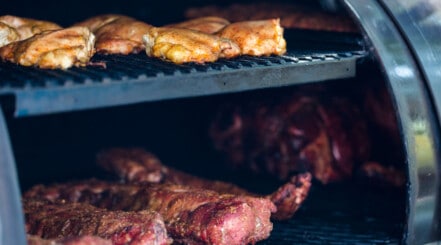
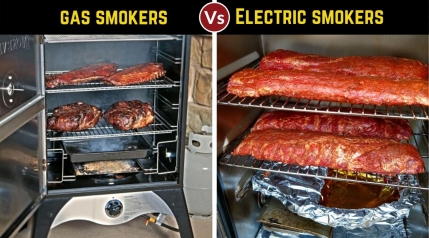
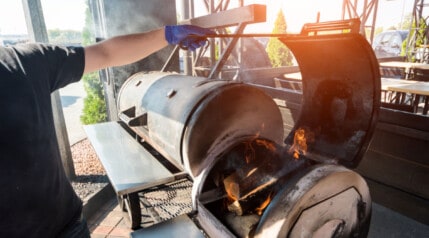
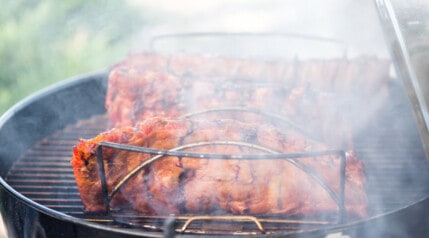
I’m just starting my research for a smoker, and this is an excellent comparison review that covers all my questions, and some I didn’t even think of! Thank you, so much!
I was looking for a good review on what type of smoker is better. Thankfully I came across yours which evidently showed me how easy it is to come to no conclusion at all but still make it look convincing. So God bless you and keep on smokin’!
Lol. Yes, no clear winner I’m afraid because there is no single ‘best’ type for everybody, there is only ‘the best type for you’ depending on your particular needs, how much effort you want to put in and so on. There are trade-offs between different types, and a gas smoker may suit person A, whereas a charcoal smoker will suit person B. Depends on what is more important to you, as discussed above.
My recommendation though is go with charcoal for the better flavor (in mine and many others opinion) and more versatility, but you do have to go through a higher learning curve to fire management and heat control, and mess with dirty coal, and ash cleanups, etc.
Very thorough descriptions.
Thanks for the info.